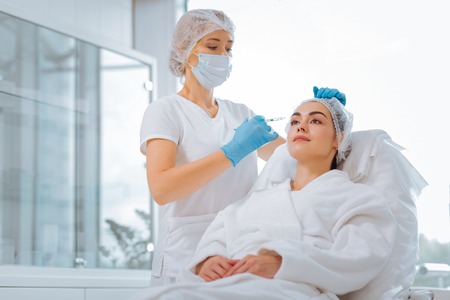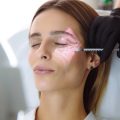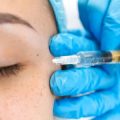Introduction to Aftercare Technology
In recent years, technology has dramatically transformed the landscape of aftercare in the United States, especially when it comes to health and wellness. Aftercare refers to the essential support and treatments patients receive following a medical procedure, cosmetic treatment, or therapeutic session. Traditionally, this care took place primarily within clinics under professional supervision. However, advancements in technology now offer more accessible options for ongoing recovery and maintenance—right in the comfort of your own home. With innovative devices, mobile apps, and telehealth platforms becoming increasingly common, Americans are enjoying more flexibility, convenience, and personalized approaches to post-treatment care than ever before. This evolution not only enhances patient outcomes but also empowers individuals to take a more active role in their health journey. As we explore the differences between at-home devices and in-clinic treatments throughout this article, we’ll highlight how technology is revolutionizing aftercare and what it truly means for people seeking optimal well-being across the U.S.
2. Rise of At-Home Devices
In recent years, the landscape of aftercare has been transformed by the growing popularity of at-home devices. Americans are increasingly turning to these user-friendly gadgets for their convenience, privacy, and ability to support ongoing care routines outside traditional clinical settings. Whether it’s about maintaining skin health post-treatment or speeding up muscle recovery after a workout, at-home devices are reshaping how we approach self-care.
Popular At-Home Aftercare Devices
The market for at-home aftercare technology continues to expand, with several standout products making waves among consumers:
| Device Type | Examples | Main Benefits |
|---|---|---|
| Handheld LED Masks | Light therapy masks for acne, anti-aging, and inflammation reduction | Non-invasive, easy to use, enhances skin appearance in privacy of home |
| Muscle Recovery Gadgets | Percussion massagers (like Theragun), compression boots, EMS units | Relieves soreness, speeds up recovery time, convenient post-workout use |
| Skincare Tools | Facial rollers, microcurrent devices, at-home dermaplaning kits | Improves circulation, firms skin, supports professional treatment results |
The Appeal: Convenience and Privacy
The major draw for these at-home technologies is their ability to fit seamlessly into busy American lifestyles. With work-from-home culture on the rise and an emphasis on personal space, more people value treatments they can perform on their own schedule. At-home devices eliminate travel time to clinics and allow users to maintain discretion about their beauty or wellness routines—something that resonates with Americans who prize autonomy and efficiency.
Meeting Modern Needs
For those balancing family life, work demands, or simply seeking an extra layer of privacy in their self-care journey, at-home devices offer a practical solution. They empower users to take control of their aftercare regimen without sacrificing quality or results.

3. Benefits of In-Clinic Treatments
When it comes to aftercare, opting for professional in-clinic treatments offers a range of significant advantages that can be hard to match at home. One of the most important benefits is expert oversight. Licensed healthcare professionals or specialists monitor your progress, adjust your care plan as needed, and ensure you’re following the best path toward recovery or optimal results. This level of supervision greatly reduces the risk of complications and ensures any issues are caught early.
Another compelling advantage is access to advanced technology. Clinics often invest in state-of-the-art equipment and techniques that simply aren’t available for home use. These tools can deliver more precise and effective results, whether you’re recovering from a medical procedure, seeking skin rejuvenation, or managing chronic conditions. For many patients, this translates into faster healing times, better outcomes, and greater peace of mind.
Finally, in-clinic treatments provide truly personalized care plans. Every patient’s needs are unique, and clinics are equipped to tailor their approach based on your specific health history, goals, and ongoing progress. This individualized attention can make a world of difference in both your immediate results and your long-term wellness. For those who value expert guidance and customized support, in-clinic aftercare continues to set the gold standard in the United States.
4. Weighing the Pros and Cons
When considering aftercare technology, its important to weigh the unique benefits and drawbacks of at-home devices versus in-clinic treatments. Let’s break down these options side by side, focusing on factors that matter most for American lifestyles: effectiveness, accessibility, safety, and cost.
| At-Home Devices | In-Clinic Treatments | |
|---|---|---|
| Effectiveness | Great for maintenance and mild concerns; may offer slower or less dramatic results compared to professional care. | Often provides faster and more noticeable results, especially for complex or severe issues thanks to advanced technology and expert supervision. |
| Accessibility | Highly convenient—use anytime at home, fitting busy schedules or remote locations. No need for appointments. | Requires scheduling and travel; best suited for those who can commit time for regular visits. |
| Safety | User-dependent; generally safe if instructions are followed, but risk increases with misuse or misunderstanding device guidelines. | Supervised by licensed professionals; protocols ensure safety and suitability for your specific needs. |
| Cost | Upfront investment in devices is usually lower than ongoing clinic sessions. Over time, can be more economical for routine maintenance. | Treatment costs per session can add up, but expertise and premium technology often justify higher prices for targeted outcomes. |
This comparison highlights how at-home devices offer flexibility and affordability for Americans juggling work, family, and personal commitments. Meanwhile, in-clinic treatments remain the gold standard for intensive care or specialized interventions. Ultimately, the right choice depends on your individual goals, lifestyle demands, and comfort level with technology or professional support.
5. Tech Trends Shaping Aftercare
The landscape of aftercare in the United States is rapidly evolving, thanks to new technologies that are making both at-home and in-clinic treatments more accessible and effective. Here’s a look at some of the key trends shaping the future of aftercare for patients and practitioners alike.
Telehealth Advancements
Telehealth has moved far beyond simple video calls. Today, many aftercare programs offer remote check-ins, digital consultations, and secure messaging with providers. These tools empower patients to manage their recovery from home while maintaining a direct line to professional support. Especially for those with mobility challenges or busy schedules, telehealth makes aftercare more convenient than ever.
AI in Health Monitoring
Artificial Intelligence is transforming health monitoring by providing real-time analysis and feedback. Smart devices such as wearables can track vital signs, sleep patterns, and even medication adherence. AI algorithms help flag potential issues early, allowing for timely interventions by healthcare professionals. This proactive approach helps bridge the gap between clinic visits and ensures continuity of care.
Connected Apps Popular in the U.S.
The popularity of connected health apps continues to soar across the country. Apps like MyChart, Healow, and Apple Health allow users to track progress, access personalized recovery plans, and communicate securely with their healthcare teams. Many clinics now integrate these platforms into their aftercare protocols, streamlining information sharing and supporting patient engagement long after leaving the facility.
Key Takeaway
From advanced telehealth services to AI-driven monitoring and user-friendly apps, technology is making aftercare more responsive, personalized, and patient-centered than ever before.
6. How to Choose What’s Right for You
Selecting between at-home devices, in-clinic treatments, or a combination of both can feel overwhelming, but with a little reflection and the right information, you can make a choice that truly fits your needs. Here’s how to navigate your options in the context of the American healthcare landscape.
Assess Your Needs and Goals
Start by identifying what you hope to achieve with aftercare technology. Are you looking for convenience, cost savings, or access to advanced technology? Consider whether your primary goal is maintenance, recovery support, or cosmetic enhancement. Being clear about your objectives will help guide your decision.
Evaluate Your Lifestyle
Your daily schedule plays a huge role in determining which option is best. If you have a busy lifestyle or travel frequently, at-home devices offer flexibility and privacy. On the other hand, if you value hands-on guidance or have complex needs, regular in-clinic sessions may provide greater peace of mind and professional oversight.
Consider Your Budget and Insurance
The American healthcare system is unique, with varied insurance coverage for different aftercare technologies. In-clinic treatments might be partially covered by insurance if prescribed as medically necessary, while most at-home devices are typically out-of-pocket expenses. Review your insurance plan details or consult with your provider to understand what’s included.
Think About Safety and Support
If you’re comfortable managing your own care and following device instructions carefully, at-home tech could be suitable. However, if you have underlying health conditions or prefer ongoing professional monitoring, in-clinic treatments offer an added layer of safety. Many Americans find success with a hybrid approach: using at-home devices for routine care and supplementing with periodic clinic visits for assessments or advanced therapies.
Tips for Making the Decision
- Consult your healthcare provider before investing in any device or treatment plan.
- Read user reviews from credible American sources to gauge satisfaction and effectiveness.
- Ask about trial periods or demo sessions offered by clinics or manufacturers.
- Factor in commute times and appointment availability if considering in-clinic options.
Remember, there’s no one-size-fits-all answer—your ideal solution should reflect your personal health goals, lifestyle preferences, and practical considerations within the American healthcare environment.
7. Conclusion: The Future of Technology in Aftercare
As we look toward the future of aftercare, it’s clear that technology will continue to play a pivotal role in shaping how we heal and maintain results after cosmetic or medical procedures. The ongoing synergy between at-home devices and in-clinic treatments offers patients more flexibility than ever before, allowing them to tailor their recovery process according to their unique needs and lifestyles. While at-home devices provide unmatched convenience and empower individuals to take charge of their own care, the expertise and advanced tools available through professional in-clinic treatments ensure safety, efficacy, and personalized guidance. The key takeaway is that neither option stands alone as the definitive solution; instead, the most effective aftercare often combines both approaches for optimal results. As technology advances, we can expect even greater integration between home-based solutions and clinical care, ultimately enhancing patient outcomes and making aftercare more accessible, convenient, and effective. For anyone navigating their post-procedure journey, staying informed about new technologies—and consulting with trusted professionals—will be essential for achieving the best possible results.


